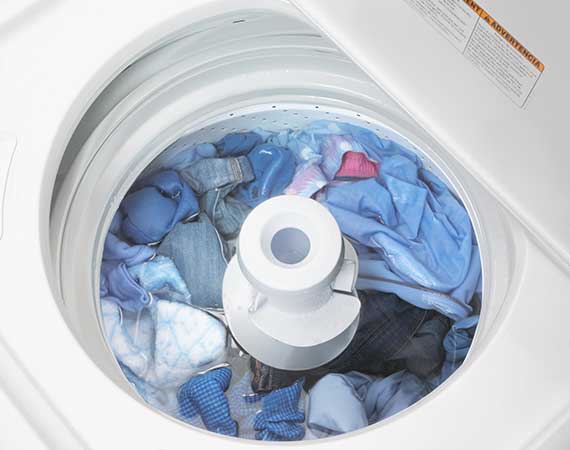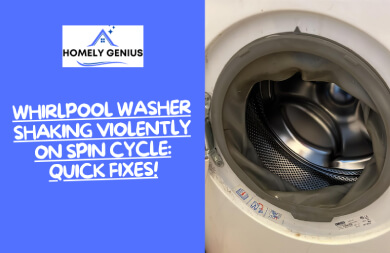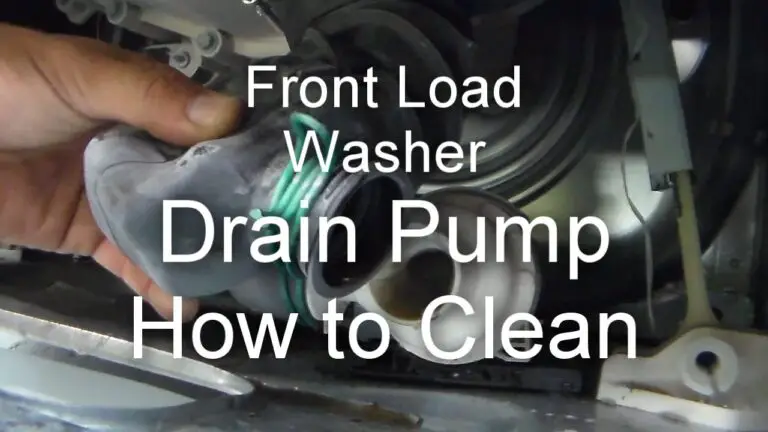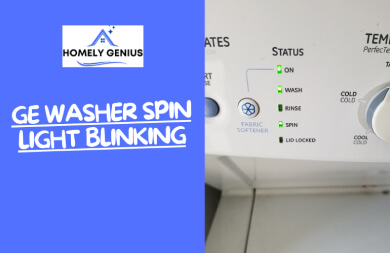Washer Not Working? Discover Quick Fixes and Solutions Today

The washer not working can be due to power issues, faulty components, or user errors. First, check the power supply and settings.
A malfunctioning washer can disrupt daily routines and lead to frustration. Common issues include power supply problems, clogged filters, or damaged parts. The first step is to ensure the appliance is plugged in and turned on. Examine hoses and filters for blockages.
Mechanical parts like belts or motors might need inspection. Regular maintenance can prevent many of these issues. Consult the user manual for troubleshooting tips specific to your model. If problems persist, contacting a professional repair service may be necessary. Understanding the basics can help you diagnose and fix minor issues, saving time and money.
Common Washer Issues
Washers are essential in modern households, but they can face problems. Knowing the common washer issues helps in timely fixes and maintenance. This section explores the most frequent problems users encounter.
No Power
A washer not powering on can be frustrating. Common causes include:
- Power Supply: Check if the washer is plugged in properly.
- Tripped Circuit Breaker: Inspect the breaker box for any tripped switches.
- Faulty Outlet: Test the outlet with another device.
- Defective Power Cord: Look for any visible damage on the cord.
Water Leakage
Water leakage can cause significant damage to your home. Common reasons are:
- Loose Hoses: Ensure hoses are tightened properly.
- Damaged Seals: Check door seals for any wear and tear.
- Clogged Drain Pipe: Inspect the drain pipe for any blockages.
- Overfilled Washer: Avoid overloading the washer with clothes.
Strange Noises
Unusual noises can indicate several issues. Here are some common causes:
- Unbalanced Load: Ensure clothes are evenly distributed inside the drum.
- Foreign Objects: Check for coins, buttons, or other items in the washer.
- Worn Bearings: Listen for grinding or scraping sounds.
- Loose Drum: Inspect if the drum moves excessively when pushed.

Credit: www.youtube.com
Basic Troubleshooting Steps
Is your washer not working? Before you panic, try these basic troubleshooting steps. Many washer problems have simple fixes. These steps can save you time and money.
Check Power Supply
Make sure your washer is plugged in. Inspect the power cord for any damage. Check the circuit breaker or fuse box. Reset any tripped breakers. Replace blown fuses. If the washer still doesn’t work, try plugging in another device. This helps ensure the outlet is working.
Inspect Hoses
Look at the water supply hoses. Ensure they are securely connected. Check for kinks or blockages. Replace damaged hoses. If the washer isn’t filling with water, this could be the issue. Also, check if the water valves are turned on.
Examine Filters
Washers have filters that catch debris. Clogged filters can cause issues. Locate the filters on your washer. Remove and clean them. Use a brush or cloth. Rinse under water. Reinstall the filters. This step helps improve water flow and washing efficiency.
Addressing Water Problems
Water issues are common in washing machines. These problems can disrupt your laundry routine. Here, we discuss the main water problems and their solutions.
Low Water Pressure
Low water pressure can affect your washer’s performance. The machine may not fill correctly. This can lead to poor washing results.
- Check the water inlet valve. Ensure it is fully open.
- Examine the hoses for any kinks or blockages.
- Inspect the water pressure in your home. It should be between 20 and 120 PSI.
Water Not Draining
Water not draining can leave clothes soaking wet. It can also cause unpleasant odors.
| Possible Cause | Solution |
|---|---|
| Clogged Drain Hose | Clean the drain hose. Remove any blockages. |
| Faulty Pump | Check the pump. Replace if necessary. |
| Blocked Filter | Clean the filter. Ensure it is clear of debris. |
Overfilling
Overfilling can cause water to spill out of the washer. This can damage your floor.
- Inspect the water level switch. Ensure it is functioning properly.
- Check the pressure hose for any leaks or blockages.
- Examine the inlet valve for any faults. Replace if needed.
Maintaining your washing machine can prevent these problems. Regular checks can save you time and money. Always ensure your washer is in good working condition.
Dealing With Electrical Issues
When your washer stops working, electrical issues could be the cause. These problems can be tricky but are often easy to fix. Below are common electrical issues to check.
Tripped Circuit Breaker
Check the circuit breaker first if your washer has stopped. A tripped breaker can cut power to your washer. Open your home’s electrical panel and look for the switch that controls your washer. If it is in the “Off” position, switch it back to “On”. If it trips again, there may be a bigger issue.
Faulty Wiring
Faulty wiring can cause your washer to stop working. Look at the power cord for any damage. If you see any cuts or wear, replace the cord. Also, check the outlet with another appliance. If that appliance does not work, you may need an electrician.
Control Panel Issues
The control panel is the brain of your washer. If it malfunctions, the washer won’t work. Look for any error codes on the display. These codes can help diagnose the problem. If the panel is unresponsive, you may need to replace it.
Fixing Mechanical Problems
Is your washer acting up? Mechanical problems can cause it to stop working. Understanding common issues can help you fix them quickly. Below are some key areas to check.
Drum Not Spinning
If your washer drum is not spinning, there could be several reasons. The most common is a broken belt. Inspect the belt for wear or damage.
- Check for a broken belt
- Ensure the motor is functioning
- Inspect the drum for blockages
Sometimes, the drum gets stuck because of foreign objects. Remove any trapped items to free the drum.
Belt Issues
A damaged belt can stop your washer from spinning. Belts wear out over time and need replacement. Here’s how to check the belt:
- Unplug the washer
- Remove the back panel
- Inspect the belt for wear
If the belt looks worn or broken, replace it with a new one. Make sure the new belt fits snugly around the pulleys.
Motor Malfunctions
The motor is the heart of your washer. If it malfunctions, the washer won’t work. Common signs include strange noises or no movement.
| Issue | Possible Cause | Solution |
|---|---|---|
| Strange Noises | Loose Parts | Tighten or replace parts |
| No Movement | Burnt Motor | Replace the motor |
If the motor is burnt out, you’ll need a replacement. Always consult a professional for motor issues.
Credit: f15.bimmerpost.com
Maintaining Your Washer
Keeping your washer in top condition is important for its longevity. Regular maintenance helps avoid problems. It also ensures your clothes come out clean every time. Let’s explore some ways to maintain your washer.
Regular Cleaning
Regular cleaning of your washer prevents dirt buildup. Follow these simple steps:
- Wipe the drum after each wash.
- Clean the detergent drawer weekly.
- Run a cleaning cycle monthly.
Use a washer cleaner or a mix of vinegar and baking soda. This helps to remove grime and residue. Keeping your washer clean ensures it works efficiently.
Preventing Mold
Mold can make your washer smell bad. Preventing mold is easy with these steps:
- Leave the door open after each wash.
- Use the right amount of detergent.
- Dry the rubber seal after every wash.
Consider using a dehumidifier in your laundry room. This reduces moisture and prevents mold growth. Keeping your washer dry is key to avoiding mold.
Routine Inspections
Regular inspections help catch problems early. Check these parts often:
| Part | What to Look For |
|---|---|
| Hoses | Cracks or leaks |
| Drum | Rust or dents |
| Detergent drawer | Blockages |
Replace damaged parts right away. This prevents bigger issues. Keeping an eye on your washer ensures it runs smoothly.
When To Call A Professional
Sometimes, your washer may stop working. Knowing when to call a professional can save time and money. Here are some key situations where expert help is needed.
Complex Repairs
Some washer issues need complex repairs. If the washer drum won’t spin, it may indicate a motor problem. Fixing this is not easy. Replacing a washer’s motor requires special tools and knowledge.
Another complex issue involves the control board. This part controls all washer functions. If it fails, the washer won’t work. Diagnosing and replacing a control board needs a professional.
Leaks are another common issue. Finding the source of the leak can be tricky. It could be a problem with the hoses, the pump, or the door seal. Professionals have the skills to find and fix the leak.
Warranty Considerations
Is your washer still under warranty? If so, doing repairs yourself can void the warranty. Always read the warranty terms carefully.
- Contact the manufacturer for authorized repair services.
- Keep all receipts and paperwork for warranty claims.
Using a professional ensures the warranty remains valid. This can save you money on future repairs.
Safety Concerns
Washers use electricity and water. This combination can be dangerous. Attempting repairs without proper knowledge can lead to electric shocks or water damage.
Some parts inside a washer can cause injury. For example, the agitator can move suddenly. This can injure your hands.
Professionals know how to handle these risks. They have the right tools and training to do the job safely.
Here is a quick summary of when to call a professional:
| Situation | Reason |
|---|---|
| Complex Repairs | Requires special tools and knowledge |
| Warranty Considerations | To keep the warranty valid |
| Safety Concerns | To avoid injury and damage |
Choosing The Right Repair Service
Is your washer not working? Finding the right repair service is key. A good technician can save you time and money. Let’s explore how to find the best service for your needs.
Finding A Reputable Technician
Start by looking for a certified technician. Certification ensures they have the right skills. You can check their credentials online. Ask friends or family for recommendations too.
Here are some tips to help you:
- Check their license and insurance
- Ask about their experience with your washer brand
- Get multiple quotes for comparison
Cost Estimates
Understanding cost is crucial. Request a detailed cost estimate before any work starts. This helps avoid surprises later. Compare the prices from different services.
Here’s what to include in your cost estimate:
| Item | Description | Estimated Cost |
|---|---|---|
| Labor | Technician’s time and effort | $50 – $100 per hour |
| Parts | Replacement parts needed | Varies by part |
| Service Fee | Call-out fee | $30 – $60 |
Reading Reviews
Reviews offer valuable insights. Look for customer feedback on various platforms. Pay attention to both positive and negative comments. This helps you gauge the service quality.
Consider these points while reading reviews:
- Consistency in positive feedback
- Resolution of complaints
- Overall rating and satisfaction
Choosing the right repair service ensures your washer gets fixed efficiently. Remember to check credentials, get cost estimates, and read reviews. Happy repairing!

Credit: www.reddit.com
Frequently Asked Questions
Why Did My Washer Stop Working All Of A Sudden?
Your washer may have stopped due to a power outage, tripped breaker, faulty door latch, or clogged drain. Check these issues first.
Why Is My Washing Machine Not Working?
Your washing machine might not work due to power issues, clogged filters, or a malfunctioning motor. Check the power supply, clean filters, and inspect the motor for any damage.
Why Is My Washing Machine On But Not Starting?
Your washing machine might not start due to a faulty door latch, power supply issues, or a tripped circuit breaker. Ensure the door is properly closed and check the power connection.
How To Fix A Washing Machine That Won’t Wash?
Check the power supply and ensure the machine is plugged in. Inspect the door latch and lid switch. Examine the water inlet valves and hoses for blockages. Clean the detergent dispenser. If problems persist, consult the user manual or contact a professional technician.
Why Is My Washer Not Starting?
Check the power supply and ensure the door is properly closed.
What To Do If Washer Won’t Drain?
Clean the drain pump filter and check for blockages in the hose.
Why Is My Washer Making Loud Noises?
Inspect the drum for foreign objects and ensure the washer is level.
Why Is My Washer Leaking Water?
Check hoses for leaks and ensure they are properly connected.
Conclusion
A malfunctioning washer can disrupt your daily routine. Regular maintenance and timely repairs can prevent most issues. Always consult the user manual for troubleshooting tips. For persistent problems, consider professional help. Keeping your washer in top condition ensures efficiency and longevity, saving you time and money in the long run.


![How to Fix Whirlpool Washer E1 F3 Error? [Top/Front Load]](https://homelygenius.com/wp-content/uploads/2023/09/whirlpool-washer-e1-f3-1.jpg)



